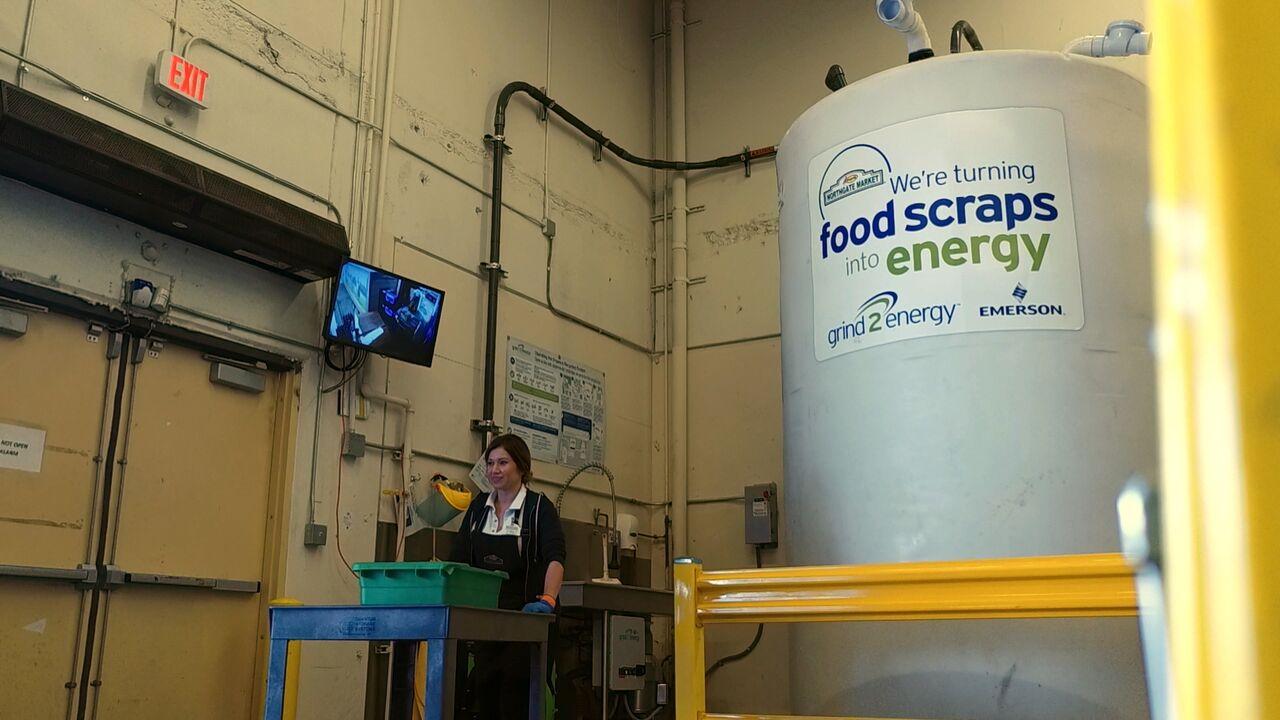
The American Thanksgiving table laden with food is a stark contrast to the massive problem of food waste in the U.S. Americans tossed out the equivalent of 6 million turkeys — worth about $293 million — over Thanksgiving last year, according to environmental group Natural Resources Defense Council. And food waste is not just a holiday problem.
On average, 52 million tons of food ends up in U.S. landfills each year and another 10 million tons is discarded at the farm, according to ReFED, a national nonprofit committed to reducing food waste. That means American consumers, farms and businesses spend $218 billion annually to grow, process and then dispose of food that is never eaten (up to 40 percent of food produced). Meanwhile, one in eight Americans struggle to put enough food on the table.
Creating value, not waste
The good news is, seriously tackling America’s food waste may finally be having its moment, not least because solving the problem translates into significant economic gains for society. In its recent report, U.S. Food Waste Investment Report, ReFED claims that an $18 billion investment into 27 solutions can yield $100 billion in societal economic value. This has attracted the interest of big business, investors, innovators and philanthropists.“This is an incredibly disruptive time for food businesses,” Chris Cochran, executive director of ReFED told TriplePundit. “We are at the point of the biggest innovative changes of the last 50 years.”
The innovation has been born of necessity, he argues. “We have an overabundance of food at the same time that many Americans are food insecure, we have scarce natural resources, a global climate crisis and need more economic growth in local communities. Food waste in our culture has been previously unexamined, seen as a cost of doing business, or a built-in household cost.”
It’s time to open our eyes, he says and investors are among the first to do so. ReFED’s research notes that more than $125 million of venture capital and private equity funding has been invested in food waste startups—a sign, Cochran says, that investors have identified “a hotbed for innovation.”
AT&T partners with Grind2Energy
Often larger businesses join forces with the smaller innovators in the food waste challenge and that has been the case for technology and engineering firm Emerson which turned to AT&T’s Internet of Things (IoT) solutions to advance its Grind2Energy food waste recycling system.The Grind2Energy system creates an industrial food grinder that helps address the costs and environmental impacts of food waste disposal from grocery stores, restaurants and stadiums. This equipment turns food waste from commercial kitchens into a nutrient-rich slurry that anaerobic digesters can turn into biogas — methane obtained from biological resources that can be turned into electricity or heat — and fertilizer, instead of being taken to a landfill where it decomposes and emits methane, a potent greenhouse gas.
AT&T’s integration of IoT enables continuous data to optimize operations, increase scalability and increase the market competitiveness of the system, Doug Brokaw, director of sales for Grind2Energy told TriplePundit.
“We’re among the first on the market with IoT integration. For us, it’s been a game changer, not only internally, but with customers,” Brokaw says.
Changing wasteful behavior
“At AT&T, we’re seeing an explosion for IoT applications in unexpected places, and this is one of them,” John Schulz, AT&T’s director of sustainability integration, told TriplePundit. “You’re taking a food waste product and turning it into something productive and beneficial. I’m also struck by what a clean system it is.”Brokaw says that the real power of the IoT technology has been for its multi-unit customers, which now have an up-to-the-minute overview of the waste they produce. “What we’ve seen over time is that customer diversion rates improve, and less goes through our system as people become better stewards. Sometimes it’s just asking a simple question, ‘Why are we throwing this away?’”
One grocery chain, Brokaw says, was generating eight 30-yard compactors of food material a month, and within a couple of months of using Grind2Energy, “they were able to knock that down to one compactor a month. That more than offset the cost of the system.”
For AT&T, Schulz says, its involvement in Grind2Energy helps the company meet its 10x carbon reduction goal to enable carbon savings 10x the footprint of its operations by the end of 2025.
Tackling waste as financial priority
These partnerships around innovation are indicative of what is happening at a wider scale across industry, the investment community and entrepreneurs, says ReFED’s Cochran, who was previously Senior Manager of Sustainability at Walmart.ReFED has outlined a roadmap to cut U.S. waste by 20 percent—13 million tons annually—while generating $100 billion of economic value over the next decade and creating 15,000 new jobs.
“I see food waste moving from a sustainability priority to a CFO priority,” Cochran says. He points to Kroger’s Zero Hunger Zero Waste $10 million innovation fund to end hunger in its communities and eliminate waste in the company by 2025 as well as IKEA’s ambition to cut food waste in its business in half by 2020.
“This is a very financial material issue for the food business,” Cochran says. “I don’t think there is another topic out there that has such clear financial and societal value at stake, creating numerous benefits: increasing economic growth, addressing food security, and protecting the environment.”
Image credit: Emerson

Based in Florida, Amy has covered sustainability for over 25 years, including for TriplePundit, Reuters Sustainable Business and Ethical Corporation Magazine. She also writes sustainability reports and thought leadership for companies. She is the ghostwriter for Sustainability Leadership: A Swedish Approach to Transforming Your Company, Industry and the World. Connect with Amy on LinkedIn and her Substack newsletter focused on gray divorce, caregiving and other cultural topics.














